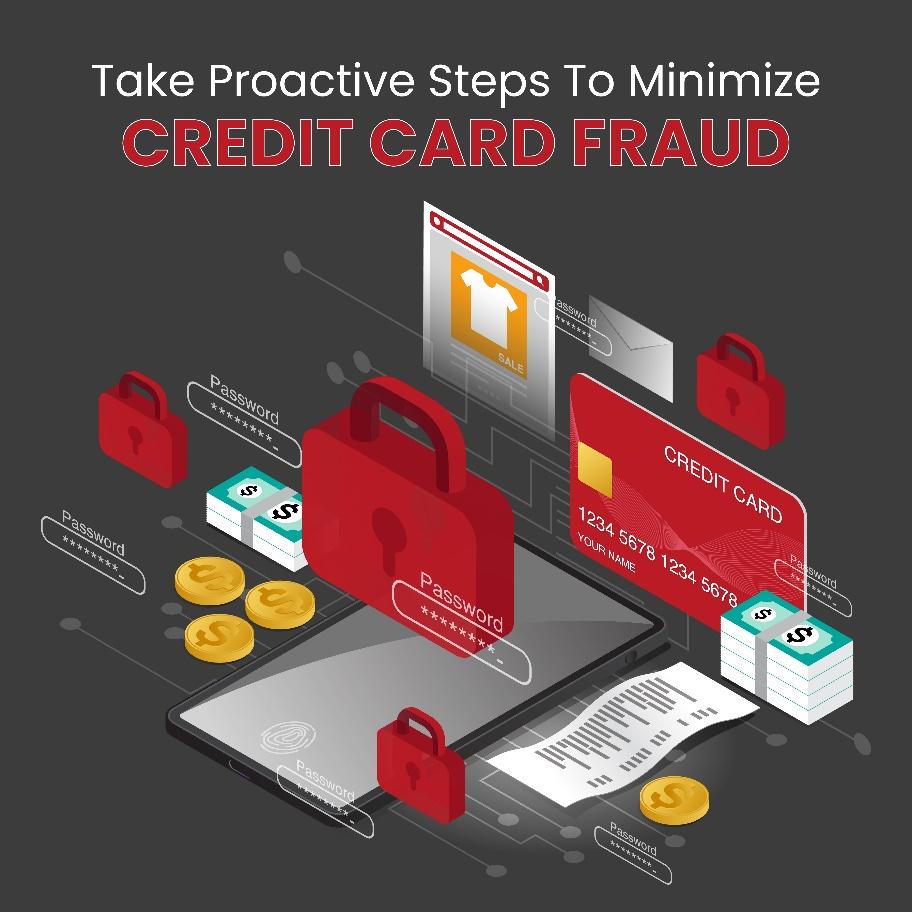It was a typical Wednesday afternoon in downtown Toronto. Claire, a 32-year-old graphic designer, was sipping her almond latte and browsing her emails when she received an alert: “Suspicious activity on your credit card – $1,050 purchase at an electronics store.” Her wallet was still in her purse, untouched. She hadn’t swiped her card all day.
What Claire experienced is becoming increasingly common in Canada. Fraudsters no longer need your physical card. They only need a crack in the digital armour — and in 2025, those cracks are getting harder to detect.
As credit card fraud tactics evolve, Canadian consumers need to be more vigilant than ever. This article explores the latest fraud trends sweeping the country, what technology is doing to counteract them, and how you can stay one step ahead.
The State of Credit Card Fraud in Canada: A 2025 Snapshot
Canada saw over $500 million in reported credit card fraud losses in 2024, and the projections for 2025 suggest a continued rise. These numbers underscore a critical reality: digital convenience comes with digital risk.
However, what makes credit card fraud particularly deceptive is its variety. We’re no longer just talking about stolen cards and forged signatures. Today’s fraudsters are coders, data miners, and social engineers. Their scams blend technical sophistication with psychological manipulation, often leaving victims unaware until it’s too late.
From phishing emails mimicking your bank to skimmers disguised in ATMs, fraud can come from all angles.
The Rise of Synthetic Identity Fraud
Among the most insidious threats in 2025 is synthetic identity fraud. Unlike traditional fraud, where thieves steal someone’s existing identity, synthetic fraudsters create new identities by combining real and fake information — say, a legitimate social insurance number with a fictional name and date of birth.
Once the synthetic identity is created, they apply for top-rated cash back credit cards, gradually build a credit profile, and then “bust out” by maxing the cards and disappearing. Because the identity is only partially real, it’s hard for financial institutions and law enforcement to trace.
Contactless and Tap Fraud: A Double-Edged Sword
Contactless cards are everywhere in Canada. They make checkout fast and seamless, but they also come with a catch: tap limits (usually $250) mean that multiple purchases can be made before the cardholder notices.
In 2025, fraudsters are using hidden RFID readers to scan wallets and steal card data while standing near you in a queue or on the subway. While newer cash back card technologies have stronger encryption, older cards may still be vulnerable.
This doesn’t mean you should fear tap payments — but it does mean you should pay attention to the kind of card you’re carrying.
Card-Not-Present (CNP) Fraud in E-commerce
Online shopping is convenient, but it’s also a goldmine for cybercriminals. Card-not-present fraud—where fraudsters use stolen credit card numbers online—has surged as more Canadians shop on e-commerce platforms.
In these cases, neither the card nor the cardholder is physically present. Fraud detection systems now use geolocation, behavioural analytics, and machine learning to spot odd patterns. For instance, if you typically shop in Ottawa but suddenly your Amex cash back card is used in Dubai, that might trigger a freeze.
Still, CNP fraud remains difficult to eradicate.
Account Takeover (ATO): When Hackers Hijack Your Credit Life
Perhaps the most terrifying scenario: someone logs into your credit card account, changes the password, and takes control.
Account takeover fraud has exploded in Canada due to password reuse and poor cybersecurity habits. Fraudsters don’t need to hack a bank — they need to trick you. They might impersonate your bank in an email or lure you to a fake login page that looks eerily authentic.
Once inside your account, they may change your mailing address, request new cards, or apply for top-rated cash back credit cards in your name.

How Credit Card Technology Is Fighting Back
The fight against fraudulent activities in the financial sector is becoming increasingly sophisticated in Canada, thanks to significant investments by financial institutions and credit card issuers in advanced fraud detection and prevention technologies. These developments are crucial, particularly as the rise in digital transactions has also led to an increase in fraudulent activities.
One of the most significant advancements in card security technology is the widespread use of EMV chip technology. Nearly all credit cards issued in Canada are equipped with these chips, which generate a unique code for every transaction. This feature significantly enhances security, as counterfeiting becomes exceedingly difficult.
Moreover, the landscape is set to evolve further in 2025, as chip cards will be augmented with biometric verification methods and real-time geofencing. These additional layers of protection promise to bolster security measures substantially, making it even harder for fraudsters to exploit vulnerabilities.
Another noteworthy innovation is the introduction of dynamic CVVS (Card Verification Values). Some cash back cards now utilize this technology, effectively making the three-digit security codes on the back of cards change regularly. This innovation minimizes the chances of these codes being reused, as they become nearly impossible to duplicate after a single transaction.
Furthermore, leading banks like RBC, TD, and CIBC are harnessing the power of artificial intelligence and machine learning to monitor customer spending behaviours in real-time. These advanced systems can effectively analyze patterns and flag transactions that deviate from a consumer’s typical spending behaviour.
For instance, if a cardholder usually shops at local grocery stores in Mississauga but suddenly makes an unusual purchase, such as jewelry in Tokyo, AI-driven systems may trigger a temporary hold on the card and prompt a verification message.
Financial institutions in Canada are proactively addressing the challenges posed by fraud through innovative technologies, including EMV chips, dynamic CVVS, and AI-driven detection systems. As these solutions evolve, they significantly enhance the security of transactions, providing consumers with peace of mind in an increasingly digital financial landscape.
Protecting Yourself in 2025: Practical, Everyday Steps
Let’s be clear: the most advanced systems in the world won’t help if you don’t take basic precautions. Staying ahead of credit card fraud requires both smart technology and smart habits.
Monitor Your Accounts Daily
Set up mobile alerts for every transaction. Most Canadian banks now offer customizable alerts for purchases, international activity, and spending limits. Checking your balance once a day takes less than a minute and could save you thousands.
Use Virtual Cards for Online Purchases
A virtual credit card generates a one-time number tied to your actual card, but the number itself expires after a single use. Perfect for shopping online, especially on lesser-known websites.
Ditch Public Wi-Fi for Banking
Never log into your credit card accounts or make purchases while on public Wi-Fi. If you must, use a reliable VPN to encrypt your activity.
Opt for Cards With Strong Fraud Protection Policies
Not all cards are created equal. Some top-rated cash back credit cards come with zero-liability fraud protection, real-time alerts, and AI-driven monitoring. Look for cards backed by strong institutions and positive user reviews.
American Express, for instance, offers Amex cash back cards that are not only rewarding but come with robust fraud prevention features — including swift dispute resolution and digital card replacements.
Be Cautious of Social Engineering Tactics
Even the most tech-savvy people can fall victim to scams. Never share sensitive information via email or over the phone unless you initiated the contact. Scammers can spoof caller ID, imitate voices, and create fake websites that look nearly identical to the real ones.
What to Do If You’re a Victim
If you notice unauthorized activity:
- Contact your card issuer immediately.
- Freeze the card through your mobile banking app.
- Report the fraud to the Canadian Anti-Fraud Centre (CAFC).
- Change your online banking and email passwords.
- Check your credit report to ensure no fraudulent accounts were opened.
The good news? Under federal consumer protection laws, most Canadians are not held liable for unauthorized charges if reported promptly.
Future Threats to Watch
As we move deeper into the digital age, the landscape of credit card fraud will continue to evolve. Experts predict the rise of:
- Deepfake-powered fraud, where audio and video manipulation tricks customer service reps into granting access.
- AI-assisted phishing attacks, tailored specifically to your browsing and financial habits.
- Smart home hijacking, where interconnected devices like smart speakers could be used to eavesdrop on credit information.
These may sound like science fiction today, but so did online banking 20 years ago.
Final Thoughts: A Shared Responsibility
The battle against credit card fraud in Canada is ongoing, and it requires vigilance from all sides — banks, merchants, credit card issuers, and above all, consumers.
While no method is 100% foolproof, combining technological tools with everyday awareness dramatically lowers your risk. Treat your financial information with the same care you’d give your physical wallet. After all, in 2025, the real threat isn’t someone stealing your card — it’s someone stealing you.
Stay sharp. Stay skeptical. And above all, stay informed.
Apply For Top Cash Back Credit Cards in Canada
Searching for the best rewards credit card in Canada can be difficult. This is where Great Canadian Rebates comes into the picture. It is your go-to platform for comparing and choosing the ideal credit card in Canada. Membership is free, and you gain access to 700+ popular merchants, along with fantastic rebates, deals, and discounts.


